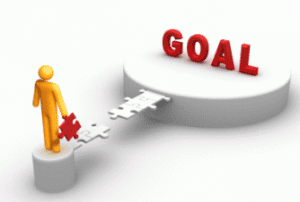 One of the essential components of well-developed situational awareness is being able to accurately predict the future. This prediction should be made during the initial scene size up and then it should be updated often as the incident progresses.
One of the essential components of well-developed situational awareness is being able to accurately predict the future. This prediction should be made during the initial scene size up and then it should be updated often as the incident progresses.
In this segment, the need to begin with the end in mind will be explored and tips will be provided for how to improve outcome predictions.
Levels of situational awareness
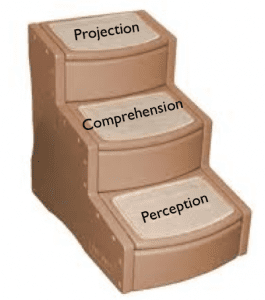 Starting off, let’s review the levels of situational awareness to form the context for how we get to predicting the future. Situational awareness begins with capturing clues and cues in the environment. All the senses can be used in the process of capturing clues and cues. In the context of emergency response, the senses most often deployed are vision and hearing. This is termed Level 1 Situational Awareness. At this level the clues and cues are not comprehended into meaning. They are only captured.
Starting off, let’s review the levels of situational awareness to form the context for how we get to predicting the future. Situational awareness begins with capturing clues and cues in the environment. All the senses can be used in the process of capturing clues and cues. In the context of emergency response, the senses most often deployed are vision and hearing. This is termed Level 1 Situational Awareness. At this level the clues and cues are not comprehended into meaning. They are only captured.
Level 2 Situational Awareness is when the clues and cues are processed into meaning. This is referred to as Comprehension. The responder may use intuition to form comprehension (using subconscious pattern matching) or may use rational judgment to process the meaning of the clues and cues (especially if the situation is novel – never before experienced).
The highest level of situational awareness, Level 3, is predicting the future. These Projections of future events come through modeling of events based on the individuals collective past experience and training. The more experience and training a responder possesses, the more likely he or she is to have good predictive skills.
Projection
 The ability to assess a situation and make an accurate prediction about the future may be the single most powerful safety-oriented skill one can have. [clickandtweet handle=”” hashtag=”” related=”” layout=”” position=””]Essentially, projection involves assessing the current situation and making a determination of how the events will unfold.[/clickandtweet]
The ability to assess a situation and make an accurate prediction about the future may be the single most powerful safety-oriented skill one can have. [clickandtweet handle=”” hashtag=”” related=”” layout=”” position=””]Essentially, projection involves assessing the current situation and making a determination of how the events will unfold.[/clickandtweet]
To see the ending of the movie before it arrives. Hollywood is masterful at leading movie watchers in a direction that points to a predictable ending, only to have an unexcited twist of fate leaving the viewer caught entirely off-guard. Screenplay writers take painstaking effort to develop story lines that are hopelessly unpredictable. That’s the hook that sells movies.
Standard predictable outcomes
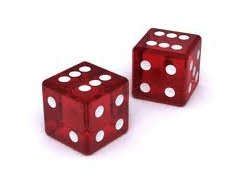 Most emergency scenes do not mimic Hollywood and the outcomes are often predictable if the emergency responders possess appropriate levels of training and experience. This is not to say that unpredictable things cannot happen, for we all know they can. But, even some of the alleged unpredictable things are, unfortunately, predictable.
Most emergency scenes do not mimic Hollywood and the outcomes are often predictable if the emergency responders possess appropriate levels of training and experience. This is not to say that unpredictable things cannot happen, for we all know they can. But, even some of the alleged unpredictable things are, unfortunately, predictable.
For example, a fire in a basement of a structure with lightweight construction weakens the floor. If a crew makes entry into the front of the structure without completing a 360 degree size up (failing to notice the heavy basement fire involvement through the walk-out basement in the rear) it may be predicable the crew might find themselves imperiled.
Or a crew make entry into a structure that is not properly ventilated of excessive heat and smoke that contains massive amounts of hydrocarbon gasses from melting plastics may find themselves in a flashover situation.
Or a fire that has weakened the components of construction, loses to the forces of gravity, and the structure falls down with firefighters inside or in proximity to the collapse zone and it results in casualties.
Bad things can happen unpredictably, that is for certain. But many bad things can also be predicted when a responder uses Projection to look into the future and envision events prior to them happening.
The role of training and experience
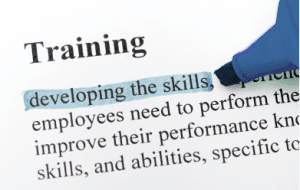 To make accurate predictions of future events (assuming it is not based on luck) responders need to possess training and experience. The higher the risk and the lower the frequency an event occurs, the more important it is to be properly prepared. Responders can enhance experience levels by becoming a student of casualty events. There is no shortage of investigative reports that chronicle the casualty events beginning to end.
To make accurate predictions of future events (assuming it is not based on luck) responders need to possess training and experience. The higher the risk and the lower the frequency an event occurs, the more important it is to be properly prepared. Responders can enhance experience levels by becoming a student of casualty events. There is no shortage of investigative reports that chronicle the casualty events beginning to end.
Responders who study these reports can see the emergence of patterns. Many of the events play out in similar (and predictable) ways. Smoke, fire and gravity all follow scientific principles. For example, if you’re trying to get your campfire started, you may blow on it to introduce additional oxygen. Blacksmiths use bellows for the same purpose, making their fires hot enough to melt steel. Thus, it should be predictable that a wind-driven fire will behave with similar properties, increasing in intensity and resulting in rapidly increasing heat and fuel consumption.
With the proliferation of videos on the Internet, it is also much easier now to learn visual clues and cues that are the predictors of bad outcomes. One of those is smoke conditions. It may be difficult to comprehend the properties of smoke through the descriptors used in a written report. Video, however, allows the viewer to see, dynamically, the color, volume, velocity and density of smoke and the changing conditions that are the predictors of the future.
Rich Gasaway’s Advice
 At the completion of every call, ask yourself: “Did this turn out as I had predicted it would?” If the answer is ‘Yes‘ then take inventory of the clues and cues that helped you make your accurate predictions. If the answer is ‘No‘ then ask yourself what clues and cues you missed (or misunderstood) that prevented you from making an accurate prediction of the future. If an unexpected outcome occurs, then ask yourself if there’s anything you could have done to more accurately predict the future.
At the completion of every call, ask yourself: “Did this turn out as I had predicted it would?” If the answer is ‘Yes‘ then take inventory of the clues and cues that helped you make your accurate predictions. If the answer is ‘No‘ then ask yourself what clues and cues you missed (or misunderstood) that prevented you from making an accurate prediction of the future. If an unexpected outcome occurs, then ask yourself if there’s anything you could have done to more accurately predict the future.
As you watch videos or read case studies use the same predictive strategy to assess the clues and cues. It’s not enough to simply make a prediction. It is important to painstakingly reflect on the indicators that allowed you to make your accurate predictions. It can be a very beneficial exercise to do this with a group of responders where ideas and observations can be shared and discussed.
1. Discuss a time when you were able to make an accurate prediction of a future event by assessing clues and cues. Inventory the key indicators that assisted in your projection.
2. Discuss a time when you were not able to make an accurate prediction of a future event and something entirely unexpected happened. Discuss what clues and cues may have been overlooked that were indicators of the future. Also discuss what clues and cues changed and how you may have been able to comprehend those changes as indicators of the future events.
3. Discuss and inventory the critical clues and cues that are the predictors of the future for various types of emergency events. Discuss how the clues and cues may be difficult to assess or may be misdiagnosed. Discuss strategies for overcoming these challenges.
_____________________________________________________
If you are interested in taking your understanding of situational awareness and high-risk decision making to a higher level, check out the Situational Awareness Matters Online Academy.
CLICK HERE for details, enrollment options and pricing.
__________________________________
Share your comments on this article in the “Leave a Reply” box below. If you want to send me incident pictures, videos or have an idea you’d like me to research and write about, contact me. I really enjoy getting feedback and supportive messages from fellow first responders. It gives me the energy to work harder for you.
Thanks,

Email: Support@RichGasaway.com
Phone: 612-548-4424
Facebook Fan Page: www.facebook.com/SAMatters
Twitter: @SAMatters
LinkedIn: Rich Gasaway
YouTube: SAMattersTV
iTunes: SAMatters Radio

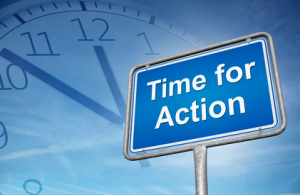

Pingback: Blogging for Situational Awareness Users and Learners | Communication
Thanks again for the great advice on Situational Awareness @RichGasaway
Thank you Hank for your continued support. You are a good friend of the SAMatters mission.